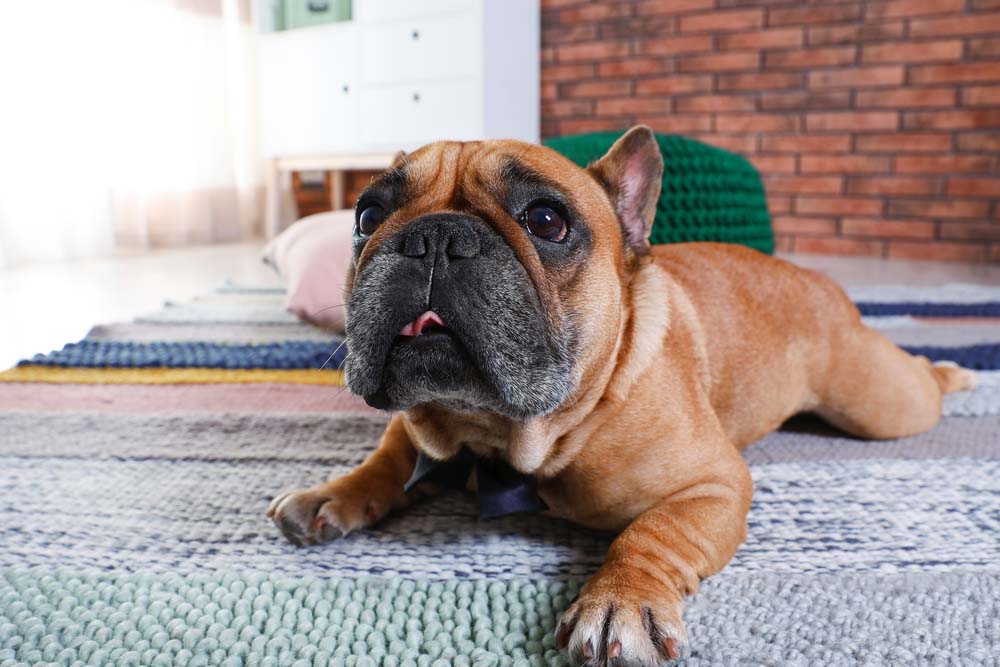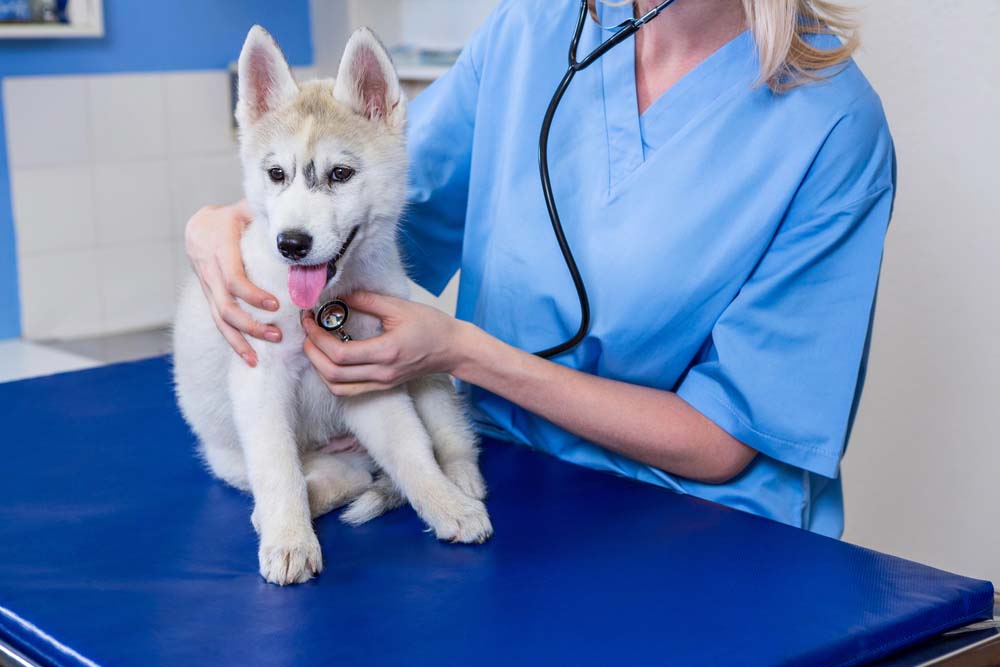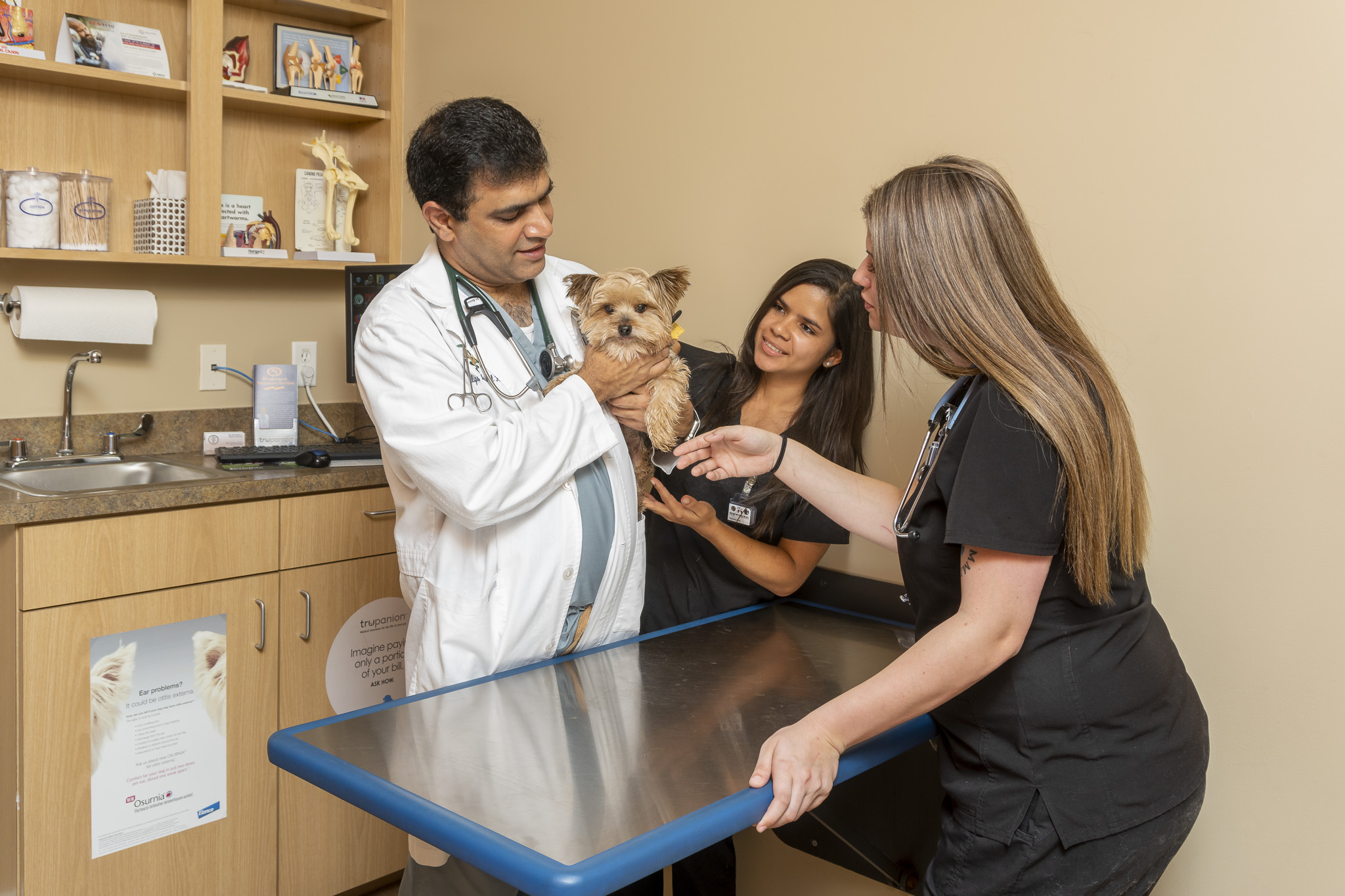
We're here for you
Emergency?
If your pet is exhibiting concerning symptoms or experiencing a medical emergency, please call our clinic at (407) 352-2579. We’ll help you through it.

Witnessing your dog having a seizure can be a frightening and stressful experience. This is why knowing the appropriate steps to take can help you stay calm and offer your pet the best care during the episode.
What Causes a Seizure in Dogs?
Seizures in dogs result from abnormal electrical activity in the brain. They are a symptom of an underlying issue and can vary in intensity. Epilepsy, which is often genetic, is the most common cause. Other causes include low blood sugar, severe anemia, brain tumors, brain injuries, metabolic diseases, and toxin exposure. Identifying the cause is crucial for proper treatment.
What Do Seizures Look Like?
Seizures can manifest in various ways. Whole-body seizures, which cause the dog's entire body to convulse, are easier to identify. However, some seizures may be localized, such as facial tremors, or may present as sudden, rhythmic movements.
Typical Symptoms of Dog Seizures
- Collapsing
- Stiffening of the body
- Jerking body movements
- Salivating
- Foaming at the mouth
- Drooling
- Chomping
- Tongue Chewing
- Jaw clenching
- Paddling motions of limbs
- Loss of consciousness
- Involuntary urinating or defecating

What To Do During a Seizure
While a seizure may be frightening, know that your pet is not actually conscious or in pain. Even though your dog may appear to be conscious or in pain during a seizure, they are not. However, it is crucial to understand how to handle the situation until the seizure is over. Follow these guidelines to make sure your dog is safe during a seizure:
Step #1
Ensure Your Dog’s Safety
Move any objects away from your dog to prevent injury. Also, make sure you keep them away from stairs and other dangerous areas. Cushion their head and gently hold and comfort them until they regain consciousness. Be aware that seizing dogs may froth at the mouth or drool excessively, but this does not indicate rabies.
Step #2
Do Not Touch Your Dog's Mouth
Dogs cannot swallow their tongues during seizures. Avoid putting your hands near your dog's mouth, or try to grab their tongue, to prevent being bitten accidentally.
Step #3
Time the Seizure
Note when the seizure starts and how long it lasts. This information is important for your veterinarian. If the seizure lasts more than 3 minutes, seek emergency veterinary care immediately.
Step #4
Prevent Overheating
Seizures lasting more than 2-3 minutes can cause hyperthermia (overheating). Cool your dog by applying cold water or wet towels around their groin, neck, paws, and head, but seek veterinary care immediately.
Step #5
Expect Involuntary Actions
Some dogs may urinate or defecate during a seizure, which is normal and does not affect the severity of the seizure.
Step #6
If Possible, Film Your Dog
Although this may seem challenging during a stressful moment, recording the seizure can provide valuable information for your veterinarian. This video can help your vet better understand the seizure type and severity, leading to more accurate treatment.
Step #7
Stay Calm
Your dog's health depends on your ability to stay calm and focused. While it can be difficult, maintaining your composure is crucial for ensuring your dog's safety.
By following these steps, you can help protect your dog during a seizure and provide your veterinarian with important information for future care.
What To Do After a Seizure
Knowing the appropriate actions to take after your dog experiences a seizure is crucial in ensuring their safety and comfort. Below are some important steps to follow after your dog has a seizure:
Step #1
Provide Comfort
Speak softly and gently to your dog as they come out of the seizure and regain consciousness.
Step #2
Monitor Closely
Keep a close watch on your dog for any signs of another seizure or abnormal behavior.
Step #3
Contact Your Vet
You should always call your veterinarian or an emergency vet after your dog has a seizure, even if they seem to recover normally. Inform your veterinarian about the seizure, including its duration and any specific behaviors observed.
Step #4
Document the Seizures
Keep a journal or use your phone to record each seizure, noting the date, time, and length. This information can help identify patterns and assist your veterinarian in managing your dog's condition.
Step #5
Be Alert for Cluster Seizures:
If your dog has more than one seizure within 24 hours, it’s considered a "cluster" seizure. This requires immediate veterinary attention, and you must take your dog to a vet right away.
Preventing Future Seizures
While some seizures cannot be completely prevented, there are several steps you can take to reduce the chances of future episodes:
Schedule Regular Veterinary Check-Ups
Routine visits to the veterinarian are essential for monitoring your dog's overall health and managing any underlying conditions that might contribute to seizures.
Administer Medications Consistently
If your dog is prescribed medication for seizure control, it is crucial to administer it exactly as directed by your veterinarian. Consistency in medication helps maintain stable levels in your dog’s system.
Identify and Avoid Triggers
Pay attention to any patterns or triggers that may precipitate seizures in your dog. Common triggers can include specific foods, environmental stressors, loud noises, or changes in routine.
Maintain a Healthy Lifestyle
Ensure your dog maintains a healthy diet, regular exercise, and a stable routine. This can contribute to overall well-being, potentially reducing seizure occurrences.
Manage Stress
Minimize your dog's exposure to stressful situations. Creating a calm and stable environment can help prevent seizures triggered by anxiety or stress.
Monitor for Changes

Be vigilant in observing any changes in your dog’s behavior or health. Early detection of potential issues allows for timely intervention, which can prevent seizures from occurring.
By following these steps, you can help reduce the likelihood of future seizures and ensure a better quality of life for your dog.
Seizures in dogs are a serious health issue that requires immediate attention and care. By remaining calm and following the steps mentioned above, you can help ensure your dog's safety during and after a seizure. Make sure to always consult your veterinarian, who can provide personalized advice and recommend appropriate treatment options.
Questions About Your Dog?
If you have any concerns about your dog, feel free to reach out to our vets!

Step One:
Call us to book your pet’s appointment.

Step Two:
Our expert vet will take care of all of your pet’s needs.

Step Three:
Get back to enjoying your happy and healthy life with your furry best friend.

Get the Best Care for Your Pet
Come Visit Dr. Qasim
Book your pet’s appointment with Dr. Qasim to ensure a long, happy life together.

We love and care for each patient as if they were our own pet.
Meet Our Team of Animal Lovers
Dr. Bilal Qasim, DVM, established Dr. Phillips Animal Hospital in 2011 after practicing veterinary medicine for over 17 years with the help of talented and caring veterinary technicians.


